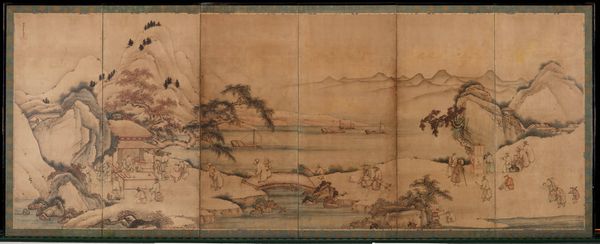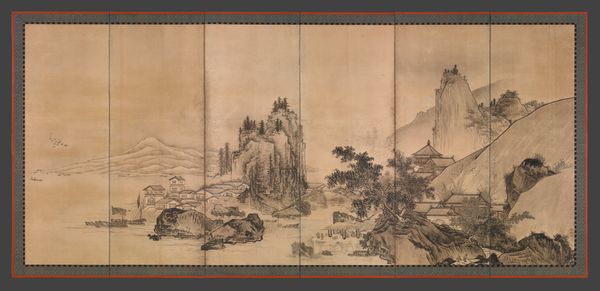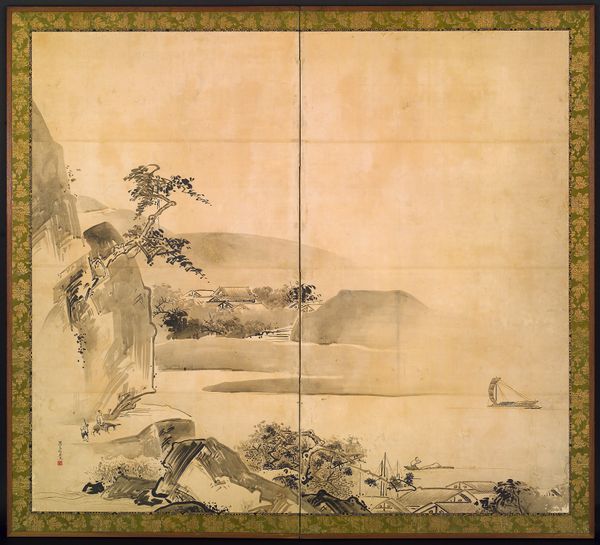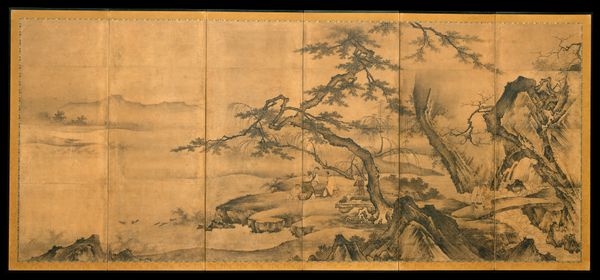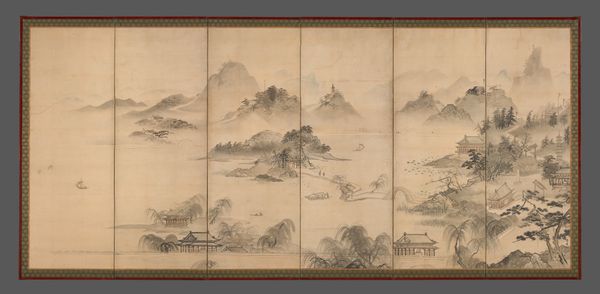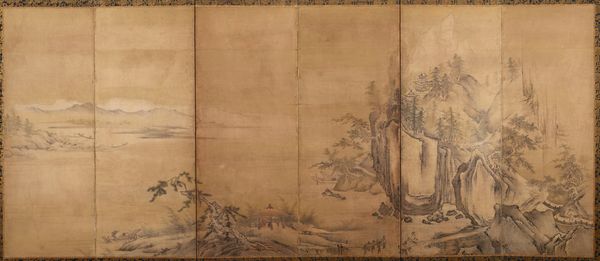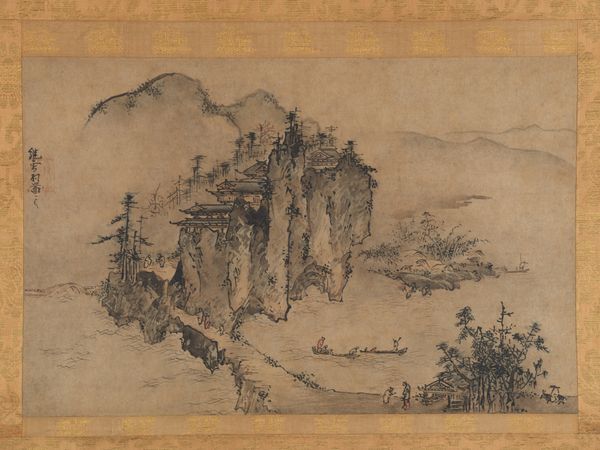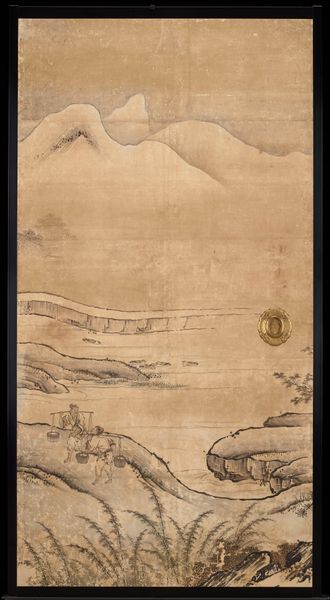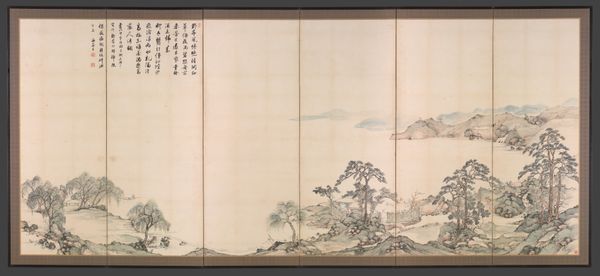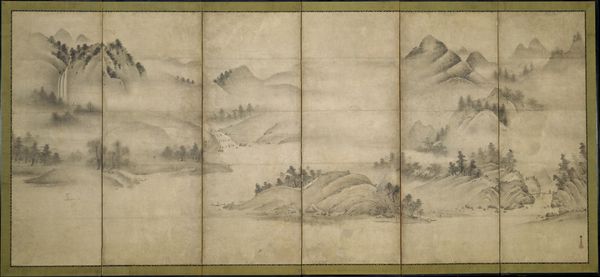
painting, ink
#
ink painting
#
painting
#
asian-art
#
landscape
#
japan
#
ink
#
mountain
Dimensions: Image (each screen): 59 1/2 in. x 11ft. 12 1/2 in. (151.1 x 356.9 cm) Overall (each screen): 66 1/8 in. x 12 ft. 3 1/2 in. (168 x 374.6 cm)
Copyright: Public Domain
Curator: Let’s turn our attention to this stunning six-panel screen, "Landscape of the Four Seasons," an ink painting from 16th-century Japan attributed to Kano Chōkichi. What strikes you most upon first glance? Editor: Hmm. It’s oddly calming for something so expansive, like peering into another world from inside a dusty dream. The misty mountains in the distance are inviting, and it almost smells like wet ink. Curator: It is important to understand that folding screens like this weren't merely decorative. Consider the material conditions of its creation and consumption; imagine this functioning as a room divider within a wealthy patron's home, a status symbol crafted with specialized labor using imported Chinese inks. Editor: Makes me wonder who sat behind it, you know? What conversations did it overhear? Maybe secrets are hiding in those brushstrokes; I can almost hear whispers rustling through the bamboo. Curator: It reflects not only the aesthetic tastes of the time, influenced by Zen Buddhism and the ideals of wabi-sabi that found beauty in the imperfect, but it also exemplifies the Kano school's synthesis of Chinese landscape painting with Japanese decorative traditions. Think about the socio-economic context! Editor: Well, I am thinking that those bold, dark brushstrokes really do give structure to those rugged cliffs while the lighter washes create depth. But what also really attracts me is the solitary figure in the boat; maybe contemplating their place within such an epic landscape? It definitely speaks to the universal desire for introspection, regardless of societal standing, I suppose. Curator: Indeed, even a seemingly contemplative image like this cannot be divorced from its place within systems of production, patronage, and power! Every mark tells a story of not only artistry, but also materiality. Editor: So, on reflection, it seems like this isn’t just ink on paper, but a beautiful testament to the many seasons of Japanese life and landscape, each carrying its own weight and whisper. Curator: Absolutely. Looking closely at artistic and material production changes the way we interpret paintings like this.
Comments
No comments
Be the first to comment and join the conversation on the ultimate creative platform.
